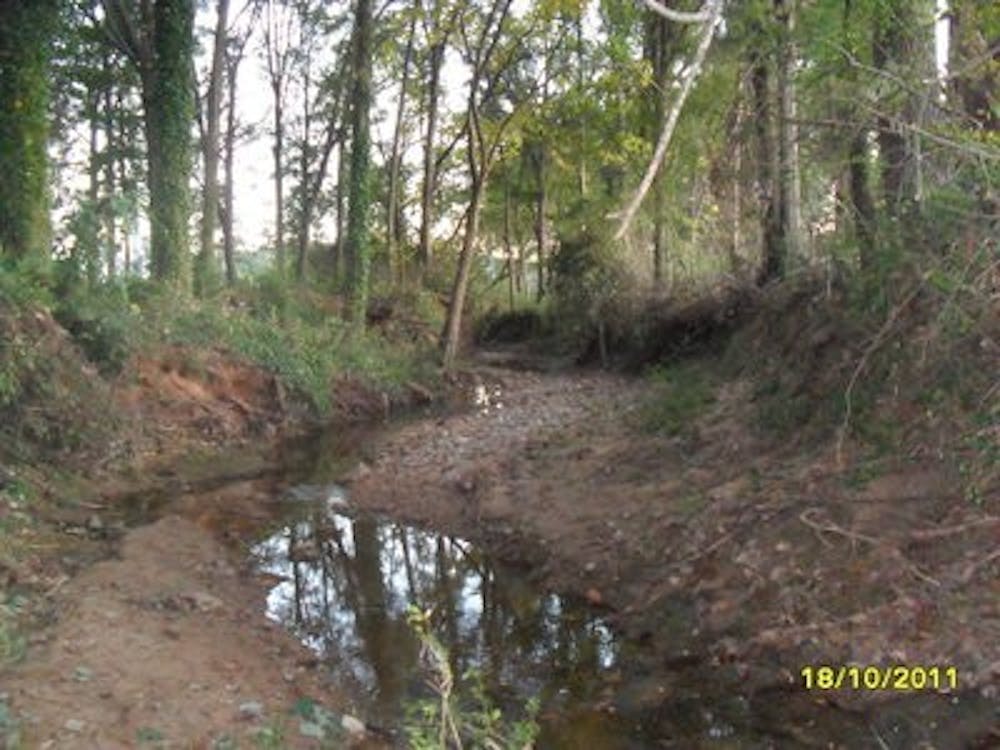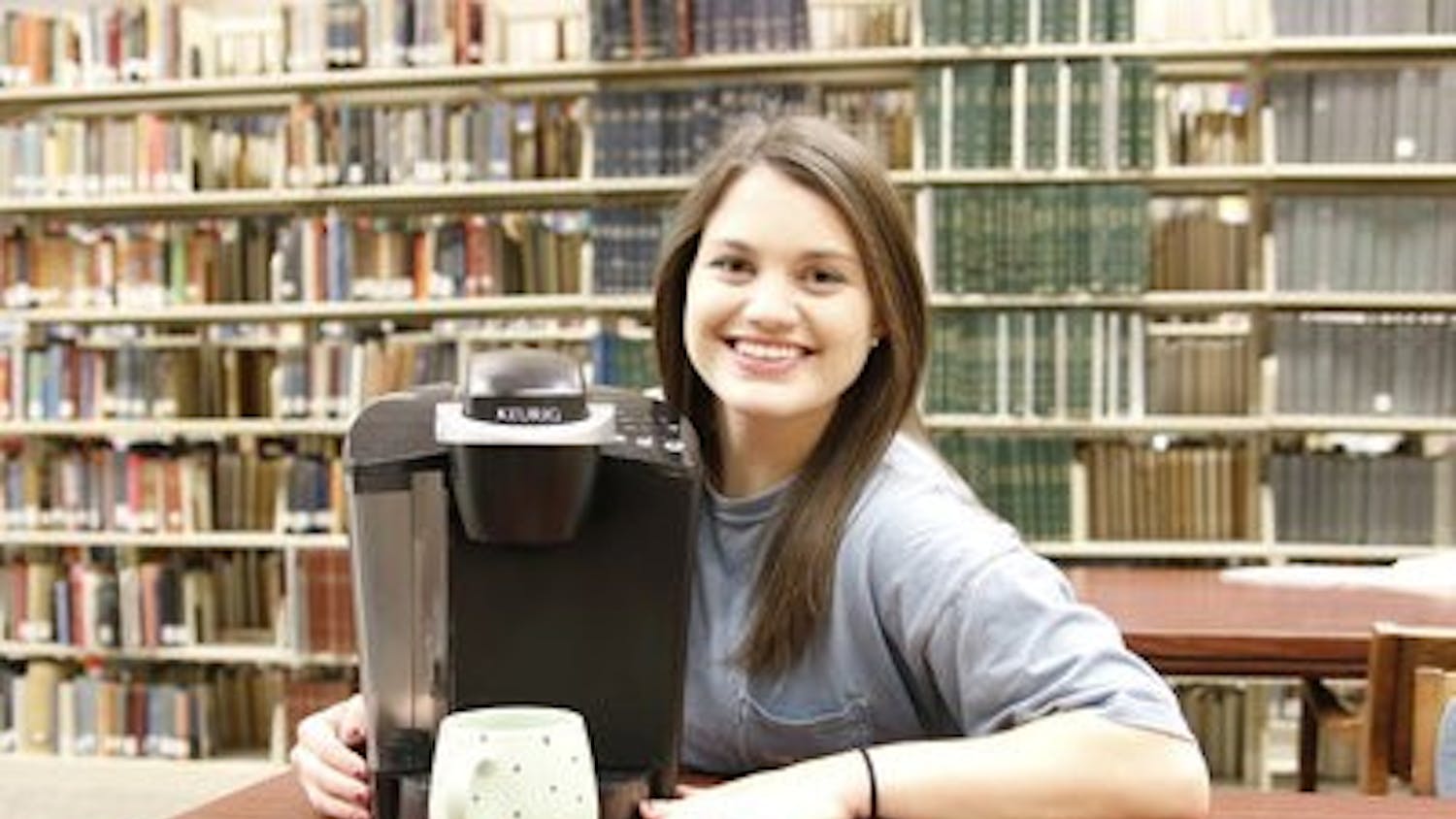The typical Auburn student has driven down South Donahue a thousand times. The majority have probably noticed a ditch in the area around the Coliseum. Most likely no one knows that this ditch is actually part of a nine mile creek that runs through Auburn.
Parkerson Mill Creek starts on the north side of campus, and lets out into Chewacla Creek just by the Water Waste Treatment Plant. Parts of it have been built over by the stadium or other buildings, and parts of it look like a ditch.
To try and better the water quality and appearance of Parkerson Mill Creek, Dr. Eve Brantley and Kaye Christian with the Alabama Cooperative Extension System and Department of Agronomy and Soils began the Parkerson Mill Creek Project.
"We definitely would not be able to accomplish as much as we do without the help of many other groups on campus that provide support - Facilities, Office of Sustainability, Office of Risk Management and Safety, Alabama Water Watch, plus many others," said Christian.
"The PMC project is a joint volunteer effort to monitor the chemistry of the water, how it looks and how to detect what outside sources may be hindering the water's quality," said Wesley Caputo, junior in biosystems engineering.
The Alabama Department of Environmental Management watches all the rivers, streams and creeks in Alabama and test them to see what the water quality is. Throughout years of testing, ADEM noticed that there were a multitude pathogens living in the creek, specifically E. Coli.
"They realized that it was a problem and it wasn't going away. We needed to figure out where it was coming from and how to stop it," said Kaye Christian, water program specialist in the Department of Agronomy and Soils.
Several sources of pollution were identified in the tests.
"We noticed that when tailgates come around, especially around the coliseum, trash from people's tailgate will wind up in the water and destroy its composition," said Caputo.
Even when it's not football season, basically every piece of trash that doesn't get placed in a receptacle will eventually wind up in a storm drain, which leads to the creek.
"The idea is to try to clean it up and deal with storm water so that we can restore the creek," said Mike Kensler, director of the Office of Sustainability.
The PMC projects aims to take preventative measures to try and stop furthering pollution of the creek. They have installed rain gardens and storm water wetlands on campus which will help to filter out some of the waste. Also, whenever erosion along the creek begins to occur, volunteers will plant plants in the soil that will grow and prevent erosion from worsening.
Though the PMC project is taking steps toward preventing the creek from further deterioration, there is only so much they can do.
Because all trash littering the ground eventually winds up in Parkerson Mill Creek, it's up to students and residents of Auburn to be mindful of where waste winds up.
If anyone is interested in helping out with the PMC project, there will be a clean-up event on Feb. 23 from 9-12 that will end with a chili lunch.
Also on Feb. 26, IMPACT will be working to clean out the creek from 2-4 p.m.. The group for both events will meet at the parking lot by the women's softball field. Any additional information about clean-up events or the PMC project in general can be found at www.aces.edu/pmc.
Do you like this story? The Plainsman doesn't accept money from tuition or student fees, and we don't charge a subscription fee. But you can donate to support The Plainsman.




